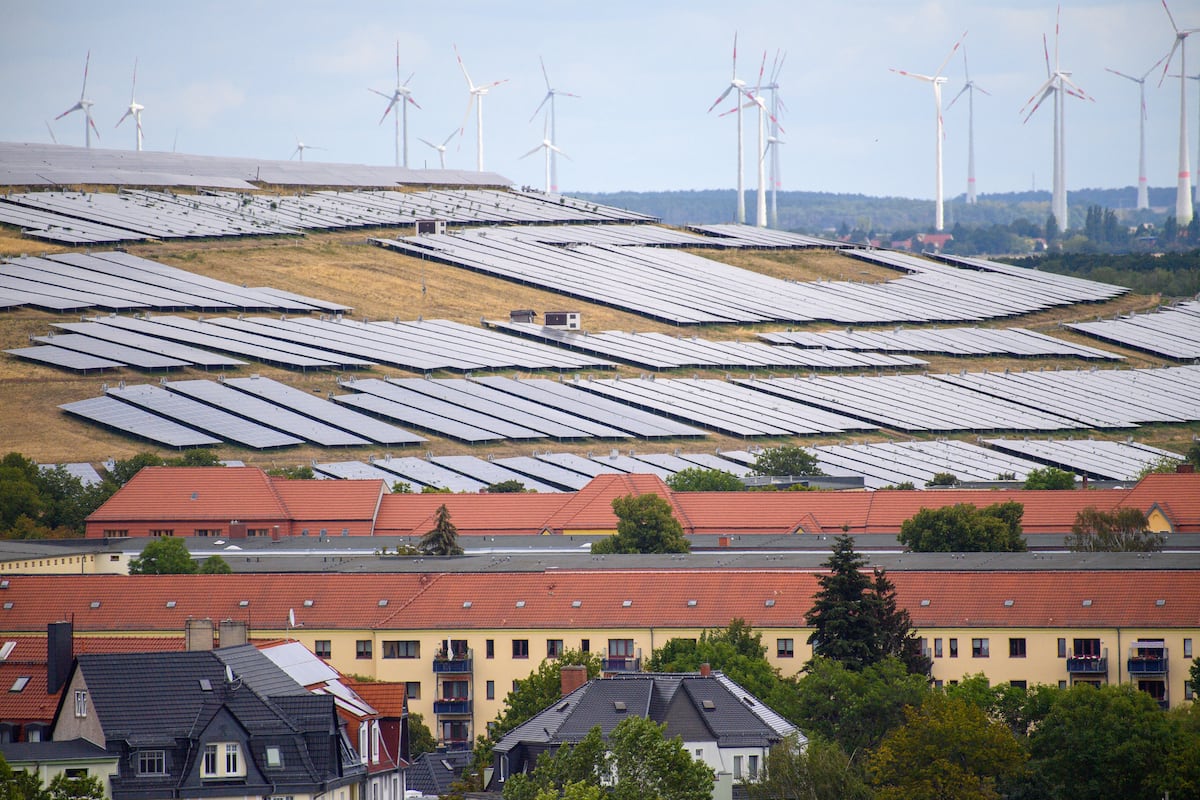The widespread feeling that the war has unleashed a veritable renewable fever throughout Europe is beginning to crystallize in numbers. The International Energy Agency (IEA) has reported on Thursday a 40% increase in the growth rate of green energies – led by solar photovoltaic and, to a lesser extent, wind – in 2023 and 2024 compared to its pre-war projections. This blow is good news both to reduce the consumption of natural gas for electricity generation, one of the main concerns of the Twenty-seven after cutting ties with Moscow, and in terms of cost for users: European consumers have saved, according to their calculations, 100,000 million euros between 2021 and 2023 by the displacement of fossil fuels.
More information
Last minute of the war in Ukraine, live
"The [energy] crisis unleashed by the Russian invasion of Ukraine has accelerated the deployment of renewable energies in the European Union, driving the urgent reduction of dependence on Russian gas," say the IEA technicians, the arm of the Organization for Economic Cooperation and Development (OECD) for energy issues. If this acceleration in the pace of start-up of new renewable installations had not occurred, the price of electricity in the wholesale market would have been – according to the Agency's calculations – 8% higher in 2022.
The very strong upward revision in its forecasts of new renewable installations responds, above all, to the "political measures" taken by most countries in the bloc. By technologies, they say, solar is "the main reason" for this unprecedented adjustment: almost three-quarters of the rise responds to the pull of photovoltaics. A rebound that has to do, he says, both with the general rise in the price of electricity, "which makes it more attractive from the financial point of view", and with "the growing support in key markets, such as Germany, Italy and the Netherlands". "Renewables are at the forefront of the European response to the energy crisis," reads the update of its sector report.
Global phenomenon
Although the European push is particularly important, the emergence of green energy is a global phenomenon. IEA estimates point to one-third growth this year, guided by high fossil fuel prices — both gas and coal are largely used to generate electricity. A momentum that will continue next: 2024 will draw the curtain, according to the Agency, with an installed capacity of 4,500 gigawatts (GW), the equivalent of the combined generation capacity of the United States and China. This last country is key: the Asian giant "continues to consolidate its leadership position, with 55% of the renewable capacity that the world will add" this year and next.
More information
Sánchez Galán rules out a shift in Spanish energy policy after the July elections
"Solar and wind are leading the rapid expansion of the new global energy economy. This year, the world will add a record amount of renewables to electricity systems, exceeding the total capacity of Germany and Spain combined," said Fatih Birol, IEA Executive Director. "Achieving higher growth, however, involves addressing some key challenges: policies need to adapt to changing market conditions, and we need to improve and expand power grids to ensure we can make the most of the enormous potential of solar and wind." His speech is in line with what has been expressed in recent days by the European Commission, which has asked Spain to strengthen its network to accommodate all the new renewable power expected for the coming years.
The other major challenge facing this accelerated take-off is the supply of key components for the installation of photovoltaic and wind energy. Here, however, the IEA glimpses greater tranquility than in recent times, with the production capacity of solar panels more than doubling by 2024, with China, the US, India and Europe leading the way. "In view of these trends, by 2030 the world will have sufficient capacity to comfortably meet the projected level of PV demand, even in the scenario of net zero emissions in 2050," the document reads. In the case of wind power, the Paris-based agency foresees an annual increase of 70% in the manufacturing capacity of wind turbines.
Follow all the information of Economy and Business on Facebook and Twitter, or in our weekly newsletter
Subscribe to continue reading
Read without limits
Read more
I'm already a subscriber

